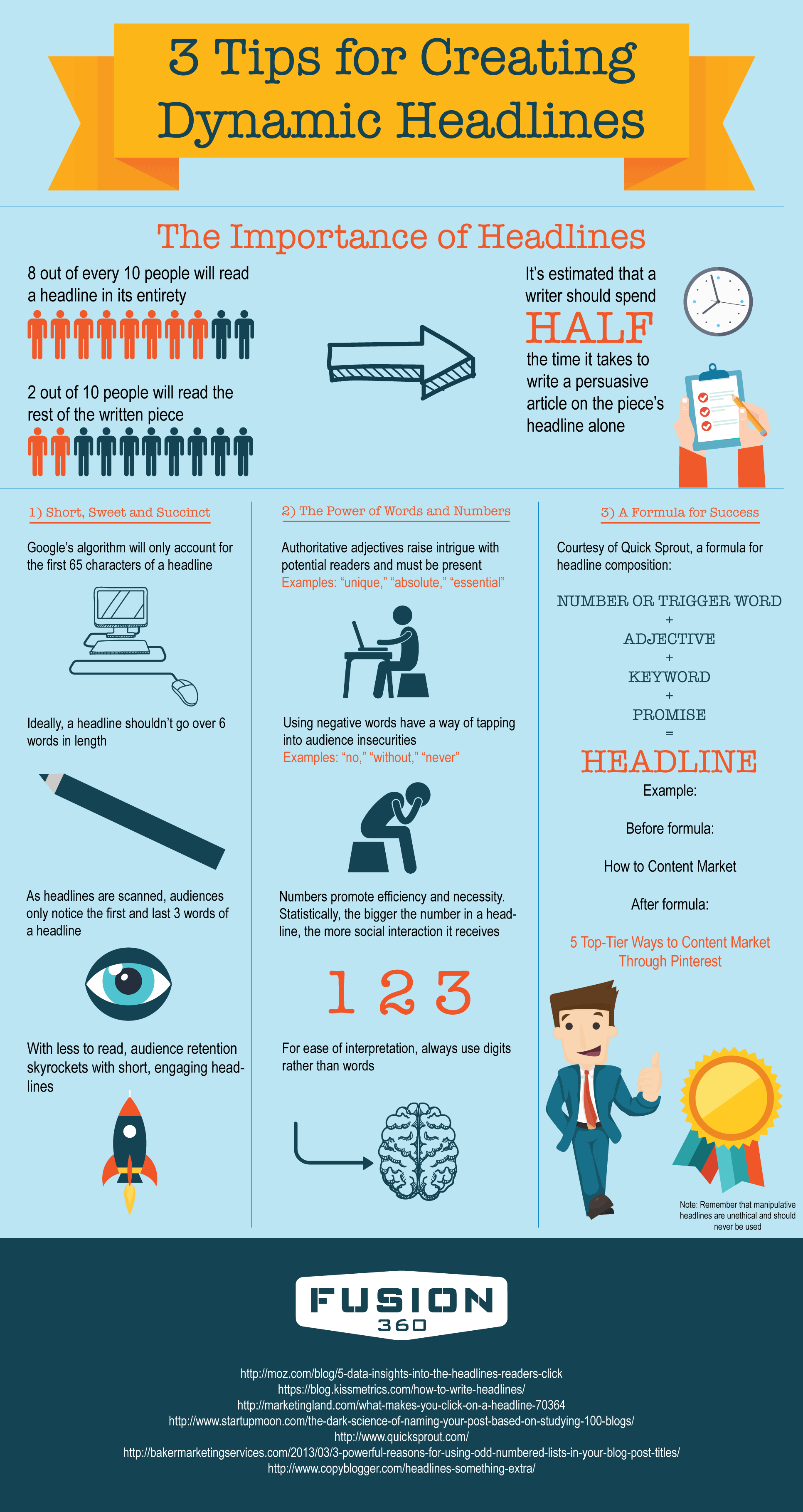In today’s day and age, more information is being consumed than ever before. With social media, smartphone apps and improvements in the ways of personal technology making the world an increasingly smaller place, the need to grab people’s attention through marketing is of the utmost importance.
These days, with so many surrounding distractions, gaining and keeping the attention of the masses—especially in the digital realm of communication and marketing—has never been more difficult. That being said, with a well-written headline in place, an audience is much more likely to listen. The tricky part, however, comes with creating the very headline that will not only get people to slow down and click, but to actually ingest your brand’s information.
The Importance of Headlines
Believe it or not, in decades past, larger publications such as the New York Times and Wallstreet Journal had people on staff whose only job was to pump out gripping headlines. While many traditionalistic publication entities have been replaced by booming websites, blogs and content marketing agencies, the need for alluring headlines remains. Presently, eight out of every 10 people will read a headline in its entirety. Unfortunately, when it comes to reading the very piece that’s being promoted, only two out of every 10 people will finish what they’ve started.
In fact, many editorial, social media and content marketing experts have gone as far as claiming that a writer should spend half the time it takes to write a persuasive article on the piece’s headline alone. If you’re struggling to keep up with your competitors in the ways of of social shareability and click-through rates, seek to improve your headlines through a few quick and simple tips:
1) Short, Sweet and Succinct
Headlines that drag on for nearly an entire sentence do little to quickly captivate readers. If anything, the faulty practice gives off a sense of desperation. Furthermore, from an SEO perspective, lengthy headlines do more bad than good, seeing as how Google’s algorithm will only account for the first 65 characters of a headline.
As if Google’s refusal to churn long-winded headlines through its famous algorithm wasn’t enough to turn you and your marketing agency off to headline wordiness, studies have shown that, as headlines are scanned, audiences only notice the first and last three words. With less to take in, audience retention skyrockets as short, engaging headlines are read. Ideally, a headline shouldn’t go over 6 words in length.
2) The Power of Words and Numbers
Obviously, the building blocks of a good title are words. Reverting back to the days of elementary English, it’s easy to see that adjectives—authoritative adjectives, to be exact—are the stuff of compelling captions. Mighty adjectives raise intrigue with a target demographic and are essential to driving traffic to any digital destination. Additionally, use negative words as a way of tapping into an audience’s insecurities.
Even numbers have their proper place in headlines. Numbers bolster a piece’s efficiency and necessity. Statistically, the larger the number in a headline, the more social interaction a pushed piece is pegged to receive. Lastly, for ease of interpretation, always use digits rather than words.
3) A Formula for Success
Oftentimes, in order to increase a task’s simplicity, formulas are required. Producing attractive headlines is no different. Courtesy of Quick Sprout, the following formula was produced for the benefit of journalists, public relations specialists and content marketing firms everywhere:
NUMBER OF TRIGGER WORD + ADJECTIVE + KEYWORD + PROMISE = HEADLINE
Take for example this mediocre headline: “How to Content Market.” After being drug through Quick Sprout’s useful formula, a better result is formed and ready for publication: “5 Top-Tier Ways to Content Market Through Pinterest.”
Finally, serving as nothing more than a friendly reminder, know that manipulative headlines are unethical and should never be used. Regardless of industry, professional position or level of editorial experience, if you’re an active writer, your relationship with headlines should be a strong one. By simply implementing the strategies presented here on a consistent basis, you’ll be more than pleased as to what your headlines will accomplish for both you and your content’s reputation on the World Wide Web.



